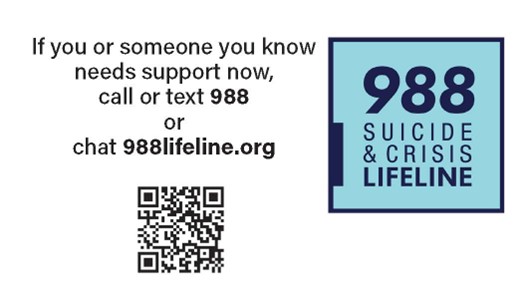New Report Calls for Research on 988 Crisis Line Effectiveness, Caller Demographics, and More
It has been nearly six months since the launch of 988—the nationwide suicide prevention and mental health crisis line. While available evidence suggests that crisis lines may help to reduce immediate crisis, substantial gaps remain in understanding how crisis lines work, according to a report in the December issue of JAMA Psychiatry.
About the 988 Crisis Line
The 988 Suicide & Crisis Lifeline provides free and confidential support 24 hours a day, 7 days a week for people in distress, and prevention and crisis resources for individuals and friends/family members. The new nationwide crisis response number—988—similar to the nationwide emergency 911. Calls to 988 connect to a network of more than 180 local- and state-funded crisis centers across the U.S.

The 988 crisis line answers more than 300,000 contacts a month, including about 200,000 calls, 70,000 chats, and 50,000 texts. The number of chats and text have been steadily increasing since the 988 line became active last July.
Learn more about the Lifeline in a previous blog post, National 988 Crisis Line One Step in Improving Mental Health Crisis Services, and at 988lifeline.org.
Research on Effectiveness of Crisis Lines
“While there is some initial research supporting 988, we implore researchers, crisis line organizations, and federal funding partners to work together to rigorously examine factors to increase the scientific rigor backing 988,” wrote Adam Bryant Miller, Ph.D., of the University of North Carolina at Chapel Hill and colleagues. Such factors include tracking how the demographics of the callers, the training of the crisis line counselors, and the relationship that forms during a call might influence the outcomes of crisis calls, they wrote.
Miller and colleagues noted that suicidal crises are often intense but transient and impulsive and that an active suicidal crisis may be the most impactful moment for preventing suicide death. They cited a 2001 study that found that 24% of survivors aged 13 to 24 years reported that less than 5 minutes passed between the time they decided to attempt suicide and when they actually attempted suicide. Another 24% reported 5 to 19 minutes between idea and attempt, and 23% reported 20 minutes to 1 hour. They also cited a 2013 study that found 8% of callers with suicidal ideation attempted suicide or harm to themselves while using crisis lines.
“The launch of 988 brings a renewed sense of urgency to examine what happens in these short, highly emotionally laden moments of crisis calls,” the authors wrote.
Because there is little information on what influences the outcomes of crisis conversations, Miller and colleagues offered the following recommendations for research on crisis lines:
- Conduct observational and randomized, controlled trials that examine how crisis line training increases positive counselor behaviors and reduces negative counselor behaviors.
- Conduct randomized, controlled trials to identify suicide risk assessment practices in crisis contexts that are most effective at reducing suicide risk in the moment and in the future.
- Evaluate which components of evidence-based interventions, such as dialectical behavior therapy, may be feasibly adapted for crisis contexts.
- Follow up with callers after the crisis conversation to investigate whether they were connected to services and the impact these services had on reducing suicide risk.
- Gather information on the individuals who contact crisis lines.
- Conduct studies with callers and counselors to assess how the quality of the therapeutic alliance between counselors and callers impacts the callers’ suicide risk at follow-up.
- Conduct observational studies to examine how counselor qualifications and certifications are associated with crisis line effectiveness.
“This should not be viewed as a comprehensive list, but rather, initial examples within each domain,” they wrote. “Access to crisis lines can only be as effective as the strategies used once a counselor answers the call. Focused research on factors that influence outcomes of crisis conversations will begin to improve crisis care.”
For related information, see the Psychiatric News article “After 988’s Launch, Experts Emphasize More Work Needed.”
